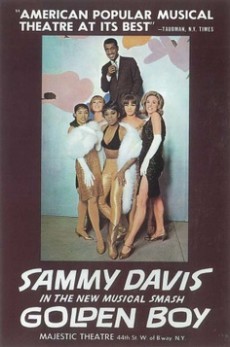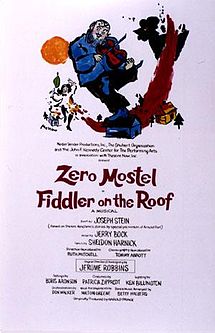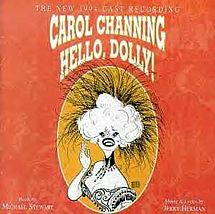
From Broadway To 52nd Street
The Roar Of The Greasepaint – The Smell Of The Crowd opened its season at the Shubert Theatre on May 16, 1965 and ran for 231 performances. Leslie Bricusse and Anthony Newley composed the music with the later starring alongside Cyril Ritchard. From these two talented lyricist and composer, Who Can I Turn To and Look At That Face entered the lexicon of jazz standards.
The Story: The allegorical plot examines the maintenance of the status quo between the upper and lower classes of British society in the 1960s. Since Sir forever is changing the rules of the game of life, downtrodden young Cocky always gets the short end of the stick. Assisting Sir is his eager disciple Kid, anxious to pick up bits of wisdom while helping keep Cocky in his place.
Broadway History: Musical theatre is a form of theatrical performance that combines songs, spoken dialogue, acting, and dance. The story and emotional content of a musical may have humor, pathos, love, anger and are communicated through the words, music, movement and technical aspects of the entertainment as an integrated whole. Although musical theatre overlaps with other theatrical forms like opera and dance, it may be distinguished by the equal importance given to the music as compared with the dialogue, movement and other elements. Since the early 20th century musical theatre stage works have generally been called, simply, musicals.
Sponsored By
www.whatissuitetabu.com

From Broadway To 52nd Street
Greenwillow rose the curtain of the Alvin Theatre on March 8, 1965 with Anthony Perkins as the lead but only lasted 95 performances. Frank Loesser composed the music for the show from which Never Will I Marry rose to stand amongst the other classic jazz tunes.
The Story: A homespun fantasy that had to do with quaint superstitions and folklore of a mythical village located on the Meander River. The whimsical tale takes up the conflict of young Gideon Briggs who would rather stay home and marry his summertime love, but who fears that the curse of his family’s “call to wander solitary” will someday make him run off to sail distant seas.
Jazz History: The birth of funk can probably be traced back to 1967 when bop saxophonist Lou Donaldson hit big with Alligator Boogaloo. It was the start of a movement – and, to many, the demise of the legendary Blue Note label. Jazz labels like Blue Note, Prestige and Atlantic, who stayed alive selling R&B records, recognized the value of funk instantly. These labels, their artists and producers Bob Porter, Francis Wolf and Joel Dorn were the primary movers and shakers of the whole genre. But there were certainly others who came along and funked up their jazz, such as Creed Taylor’s CTI and Kudu output between 1970 and 1975). The whole thing probably ended in 1975, when disco and an increasing array of electronica started taking funk in a new yet still worthy direction. But the musical edge of funk was clearly getting replaced with slicker effects.
A decade later, when jazz was suffering under the post-fusion tradition-bound conservatism of Wynton Marsalis and “the new young lions,” young DJs in London spearheaded by Gilles Peterson began to rediscover these old funk records in thrift shops and spun them for the young dancers in the hippest clubs. Here, “acid jazz” was born. It still took another decade for the US to realize its own funk legacy and by the late 1990s, surviving funk musicians were finally getting paying work and hero worship bestowed upon them.
Sponsored By
www.whatissuitetabu.com

From Broadway To 52nd Street
Golden Boy opened the Majestic Theatre on October 20, 1964 starring Sammy Davis Jr., Billy Daniels, Paula Wayne, Johnny Brown, Lola Falana and Lou Gossett. Charles Strouse & Lee Adams composed the music from which Night Song was plucked to become a jazz standard for a show that ran 568 performances.
The Story: The play reflects the struggle of an ambitious young black man in America and focuses on Joe Wellington, a young man from Harlem who, despite his family’s objections, turns to prizefighting as a means of escaping his ghetto roots to find fame and fortune. He crosses paths with a Mephistopheles-like promoter Eddie Satin and eventually betrays his manager Tom Moody when he becomes romantically involved with Moody’s girlfriend Lorna Moon. In his quest for glory loses his soul and his life.
Broadway History: These innovations in lighting also made advertising on Broadway much more effective. The world’s first electrically lit large commercial billboard was erected over Madison Square in 1892. It read, “Buy Homes On Long Island/Swept By Ocean Breezes” and was paid for by the Long Island Rail Road. Though the sign had disappeared from the New York skyline by 1895, its brief exposure caught the eye of every business owner on Broadway, which by then included the square intersection at W. 42nd, Broadway, and 7th Avenue (the tourist-glutted hotspot we all know and love, “Times Square”, which was named after The New York Times in 1904, when the publication moved into its new headquarters building there, had decided to advertise with the new “spectaculars,” so called because of their large, complex light displays and intricate designs, some flashed, and some even had animated sections that moved.
Sponsored By
www.whatissuitetabu.com

From Broadway To 52nd Street
Fiddler On The Roof opens the curtains at the Alvin theatre on September 22, 1964. Zero Mostel stars in this show that was the first musical to surpass 3000 performances. With 3, 242 it held the record for ten years and reigns as the 16th longest running show in Broadway history Jerry Bock & Sheldon Harnick composed the music for this Tony Award winning production. The tune from the show that would go on to rest alongside other great jazz classics was Matchmaker, Matchmaker.
The Story: In the Jewish village of Anatevka, Russia in 1905 the story follows the life of a dairyman Tevye, the father of five daughters and his attempts to maintain his family and Jewish religious traditions. While outside influences encroach upon their lives, he must cope both with the strong-willed actions of his three older daughters—each one’s choice of husband moves further away from the customs of his faith to finds happiness, love, and financial success through marriage. When all Tevye’s plans fall apart as Russia sustains a revolution, he must flee their destroyed village with his family to America while holding on to his faith and find his own happiness.
Jazz History: The Half Note located at 296 Spring Street on the corner of Hudson Street saw its peak years from 1957 to 1972. Established by Brooklyn-born Mike Canterino who while in the Nay in Florida befriended a local saxophonist named Cannonball Adderley, opened in a desolate location in New York City’s West Village, the club that had been a hard-drinking saloon dubbed the Zombie Bar was renamed and began booking jazz in 1957. Two things separated the Half Note from other clubs. Canterino intentionally integrated his lineups, and changed the industry’s 40-20 set-length standard (40 minutes on, 20 minutes off) by allowing musicians to play as long as they desired—often past the time his cabaret license permitted. Veteran blowers like Ben Webster could play all night long—and did—while experimentalists like Coltrane used the Half Note as a workshop of sorts, turning tunes like the legendary “One Down, One Up” into marathon workouts.
Sponsored By
www.whatissuitetabu.com

From Broadway To 52nd Street
Hello Dolly opened at the St. James Theatre on January 16, 1964 with music composed by Jerry Herman. The show starred Carol Channing & David Burns, Eileen Brennan, Sondra Lee and Charles Nelson Reilly, running for a record 2,844 performances landing it amongst the grand collection of blockbuster hits. It was revived in 1967 with Pearl Bailey & Cab Calloway in the lead roles and in 1969, Barbra Streisand & Walter Matthau took the characters to the silver screen. The title song Hello Dolly and It Only Takes A Moment went on to become a part of the jazz catalogue.
The Story: At the turn of the 20th century in New York City, a brassy and intrepid matchmaker Dolly Galagher Levi is in town to find wealthy Horace Vandergelder a wife. However, unbeknownst to Horace, Ms. Levi has her sights set on him herself. While helping two rich pretenders to find love, Dolly finds romance and a husband for herself in this spoof on love and marriage.
Broadway History: Broadway, previously the home to jazz influenced choreographers like Cole, Fosse, and Robbins, saw a part of its nature change to reflect the mood of the country. While there were still blockbuster musicals of the old type – like My Fair Lady, Hello Dolly, Mame – a new generation of musicals reflected the changes in American society, and dance. Hair was a depiction of the rebellious nature of the hippie movement. And Fosse, that champion of syncopated, tap and minstrel based movement, absorbed the new 60s feel of dance with his hit musical Sweet Charity. In this show, Fosse based much of his movement on the social dances of the 1960s, while injecting his own unique brand of style and angular movement and jutting body parts. The movements of jazz dance had evolved to absorb the blossoming social scene. Broadway was no longer the spawning ground for theatrical jazz dance. It had become a pastiche of old standard styles and movements, and an incubator for a new form of jazz dance.
Sponsored By
www.whatissuitetabu.com


